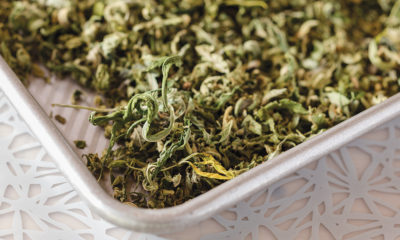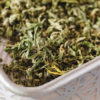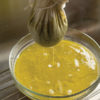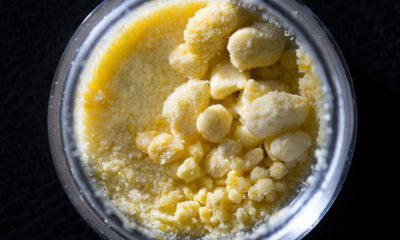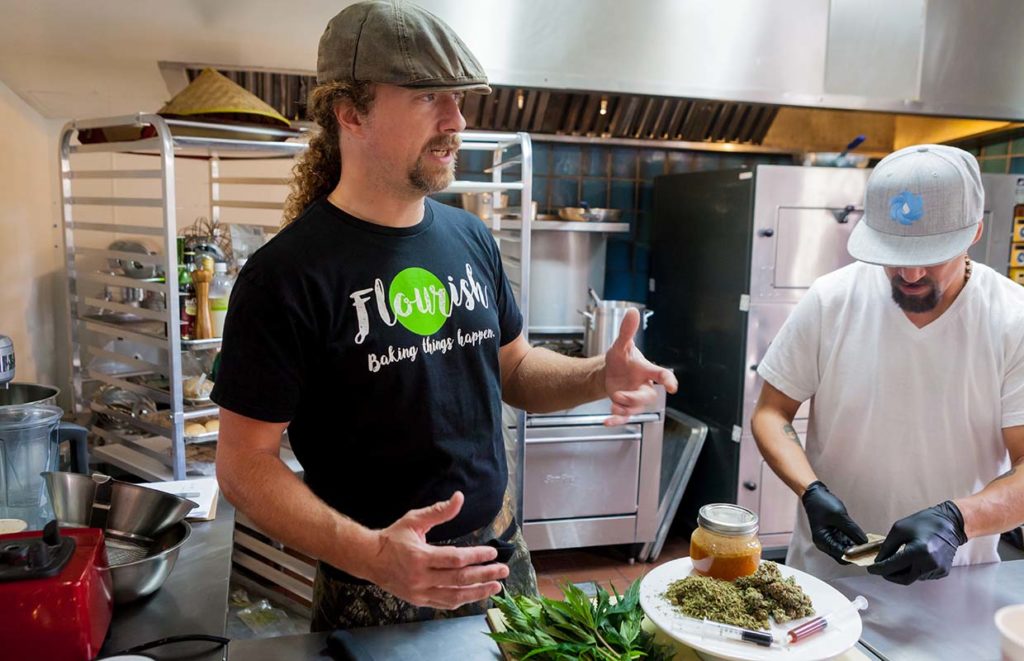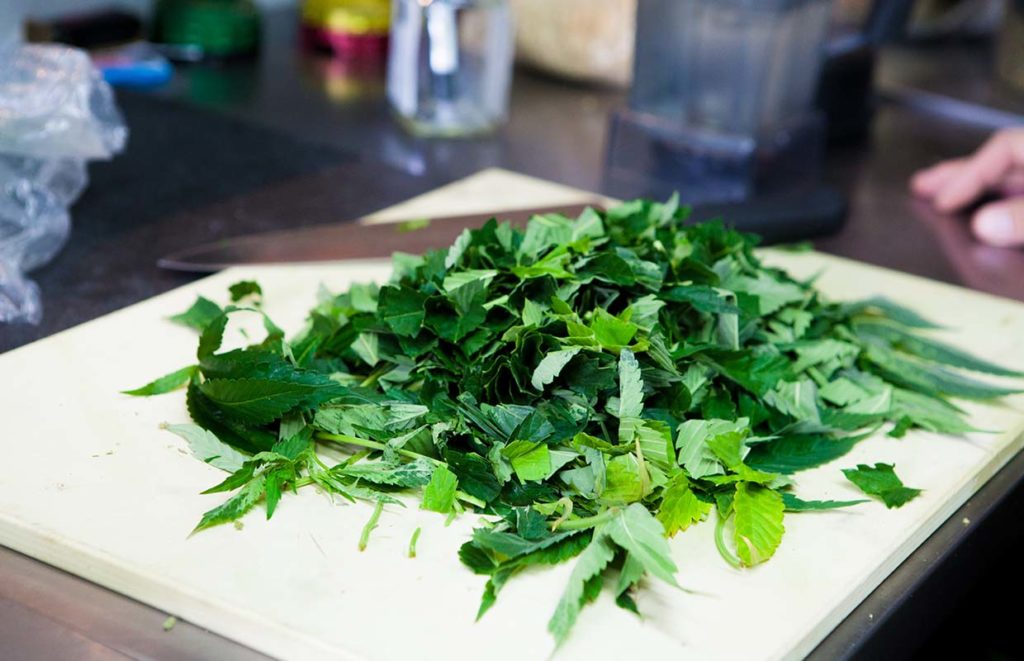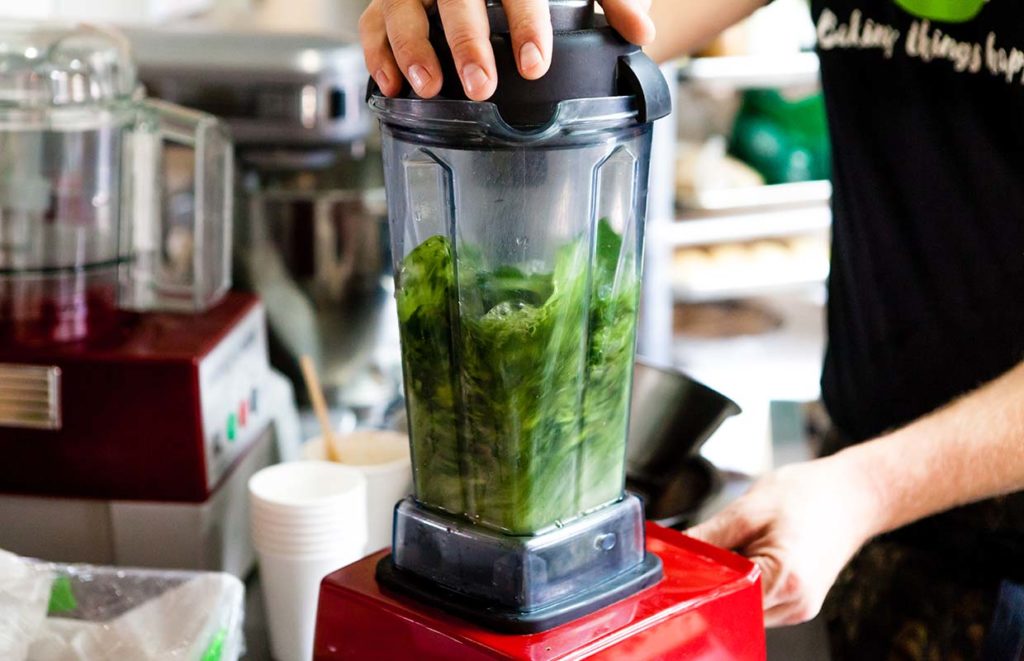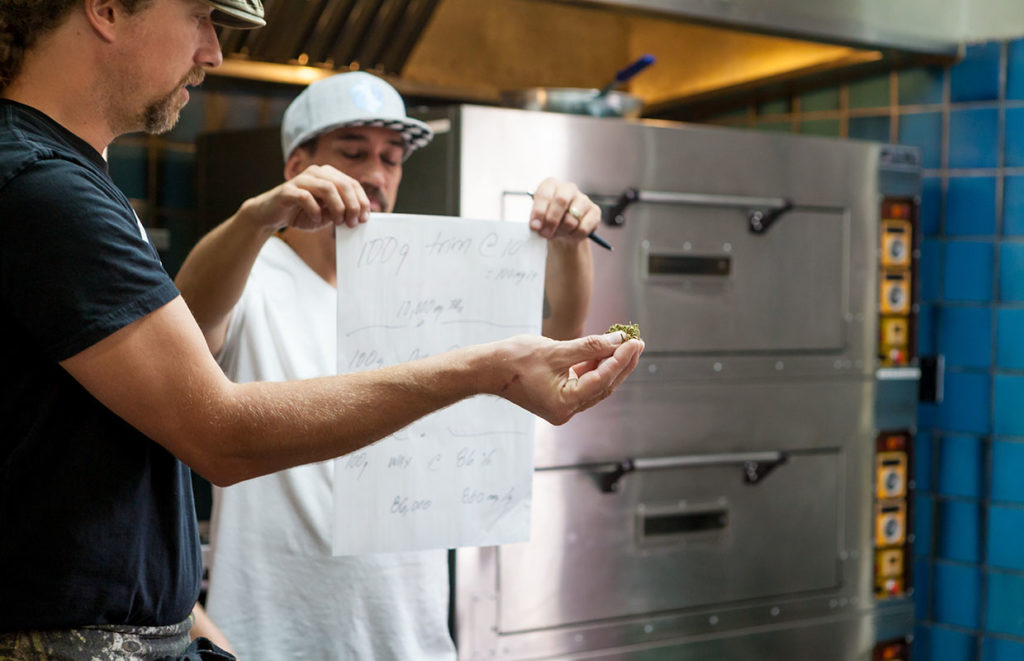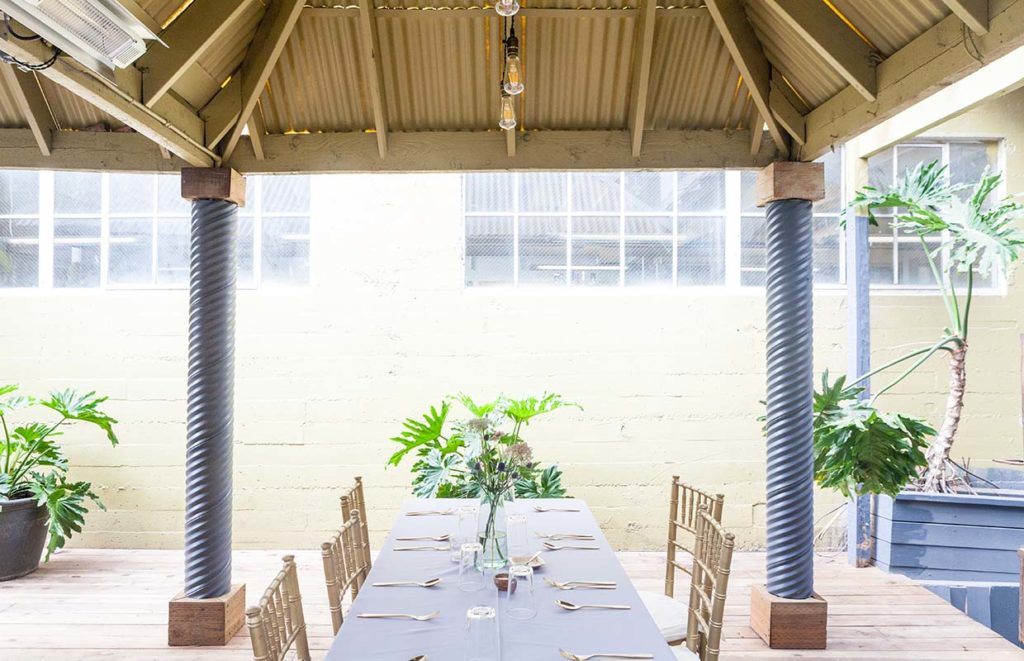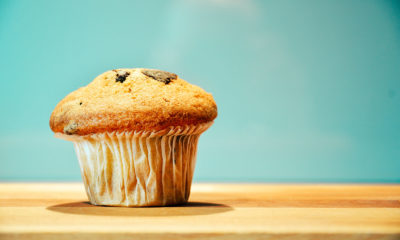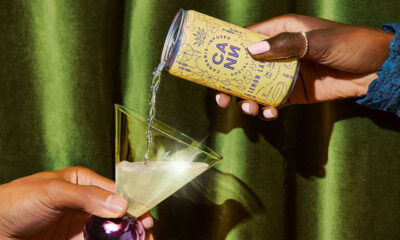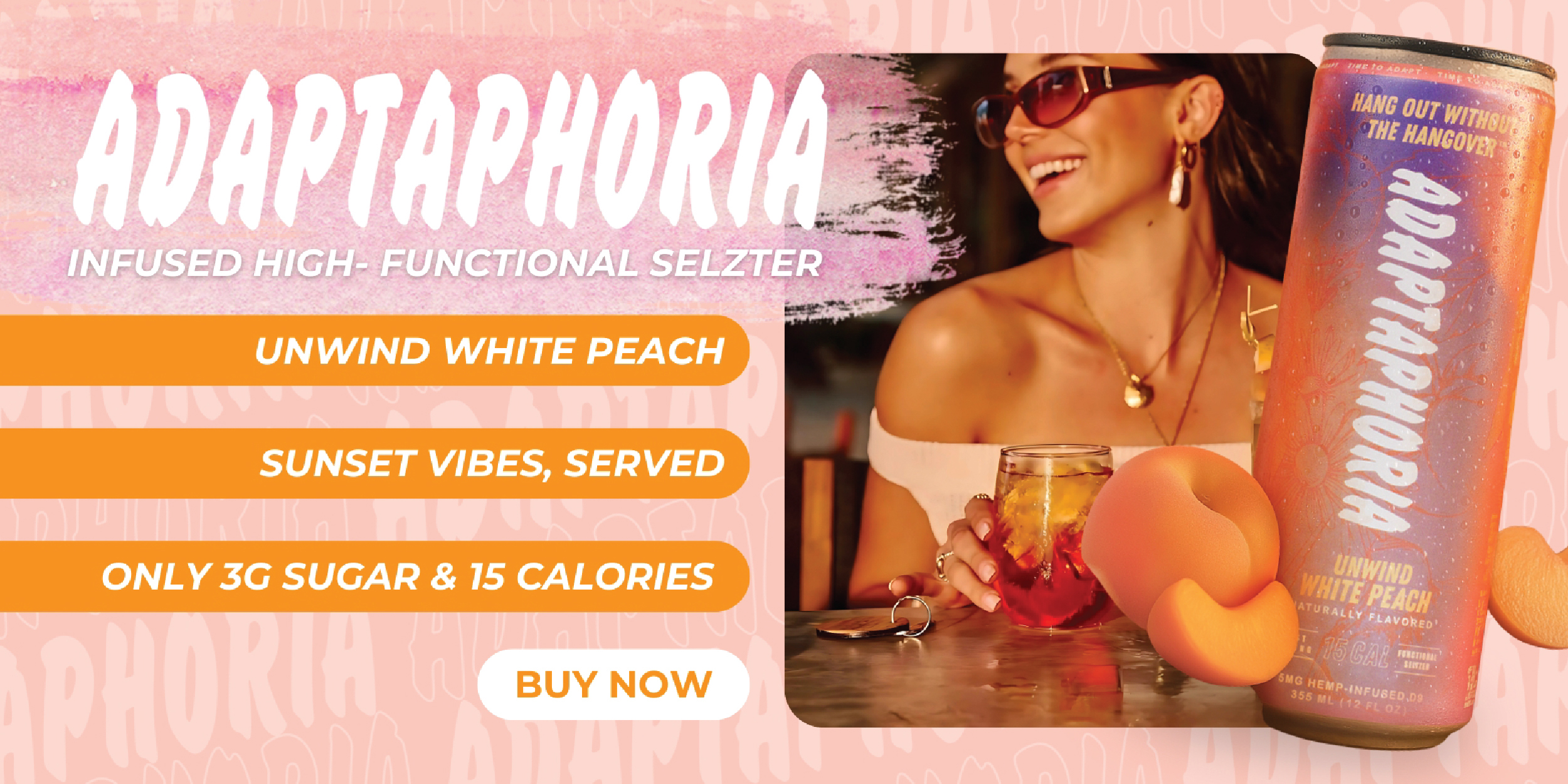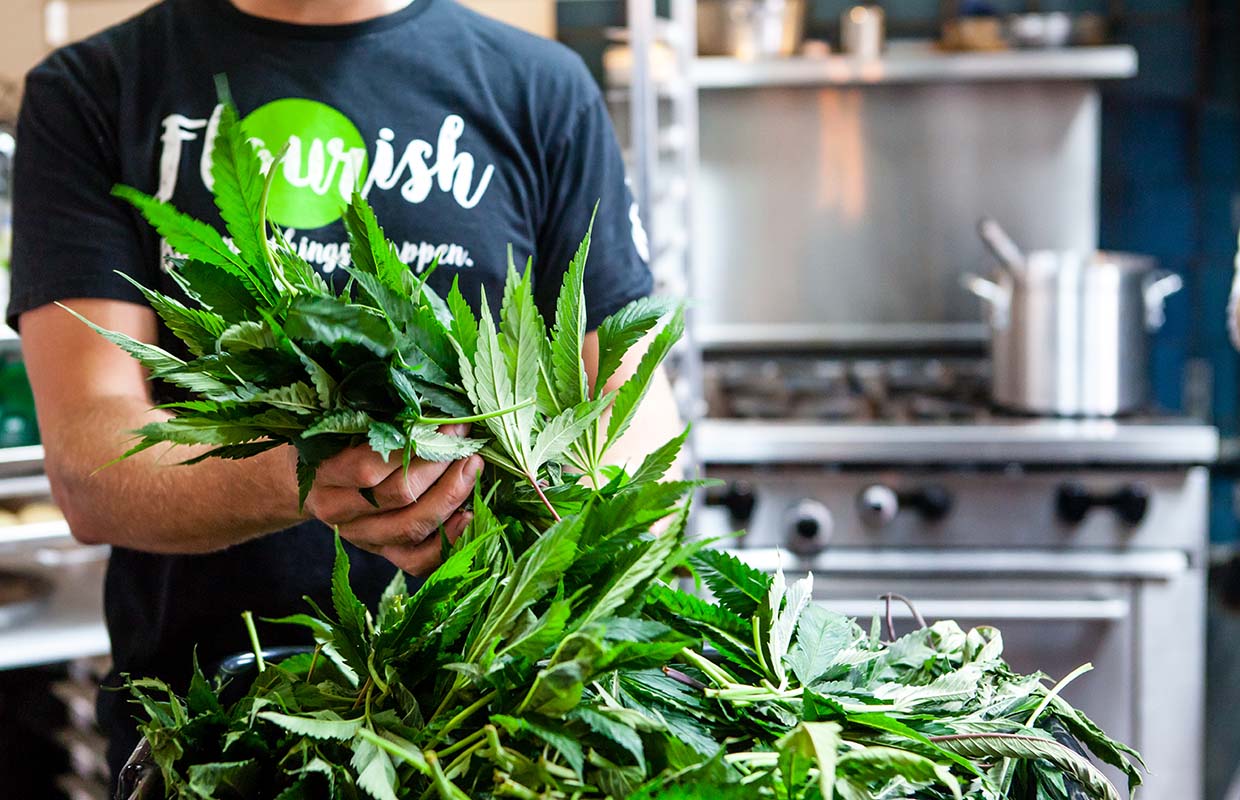
Edibles
Pop-Up Shows Home Cooks How to Work With Cannabis
A private event demonstrates how to juice cannabis leaves and create oil infusions.
Within a restaurant space in downtown San Francisco on Wednesday morning a small group gathers for a cooking and juicing demonstration hosted by a noted chef. The whole thing feels very Californian, vegan donuts and coffee are offered as songs by Perfume Genius play within the bright open room which has tables set for an upcoming dinner service and one person is smoking a joint on a back patio. However, as common as this type of cooking pop-up gathering might seem in the San Francisco Bay Area, what is uncommon is the use of the day’s star ingredient, cannabis. The person smoking the joint is chef Payton Curry, the CEO and founder of Flourish, and he is hosting a demonstration that will show attendees how to juice the raw leaves of the plant and make infused oils at home as a part of a weeklong pop-up designed to introduce others to an experience he’s coined as “cannavore dining.”
“These events are to socialize cannabis,” Curry says. “It’s for the community, this is a public service event. This is the future of what we call ‘hashpitality,’ hospitality with hash.”
The events, which include infused dinners and cooking classes, exist within a legal gray area. Although cannabis is now legal for adults in the Golden State to possess, shops to purchase retail marijuana are not set to open until Jan. 1, 2018 and, at least for now, the pop-ups are private gatherings for medical marijuana patients where cannabis products are ingested and sampled, but not sold. Oakland resident Wanda Blake heard about the event from an article a friend sent her way. She’s a recent medical marijuana patient who received her recommendation only a month ago because the acupuncturist she was seeing lost her space, but told Blake that she could receive her services free of charge through wellness activities offered to patients at one of the state’s largest dispensaries, Harborside Health Center.
“I haven’t had any connection with cannabis in 20 years,” she said.
Blake now uses cannabis topicals, but doesn’t smoke or consume edibles. She does however, own a catering company called Wanda’s Cooking and is interested in cooking edibles for others who are in need of pain relief. Her friend has Stage 4 cancer and wants to try cannabis to feel relaxed, but not anxious.
“I haven’t quite figured out how this cooking is going to work without me tasting it,” she says with a laugh.
Despite not consuming cannabis in other ways, during the course of the demo Blake does try some of the juice made from the leaves of the plant. Cannabis leaves are high in the raw cannabinoid THCA, but because the cannabis has not been activated through a process known as decarboxylation, ingesting the leaves does not result in the feeling of being stoned.
“With the inflammation in my body I really need that [juice],” she says while cradling a box of leaves Curry has given her to take home.
Curry started his career in the kitchen as a 14-year-old dishwasher and rose to prominence cooking for some of the top restaurants in the Bay Area including The French Laundry, Ame and Quince. Flourish, which offers a line of about 36 infused products including a ranch dressing “called Forbidden Valley Ranch just because,” began in Arizona about 10 years ago and expanded to the California cannabis marketplace this spring. Curry has recently been traveling around the nation welcoming small businesses to collaborate on his concept, a culinary institute of cannabis that will teach line cooks across America how to dose with infused products beyond as a distillate, a process used to concentrate cannabis that utilizes ethanol.
“That’s what I want is that full-spectrum, full-nutrition real medicine,” he says.
To explore his vision, Curry’s brought on Jacob Bird, a 25-year executive chef turned hashmaker. Bird’s Oakland-based company is called Wise Bird Handcrafted Products and Curry can’t say enough about the hash Bird produces which, he says, provides for more nutritious cannabis edibles and blends without sticking or running, resulting to more precise dosing. As a part of the day’s demonstration Bird stretches the hashish, a cannabis concentrate made my agitating trichomes covered in THC from buds or trim using water and ice, into a thin golden strip.
“It turns into this Louis Vuitton gold,” Curry says.
While all of Flourish’s current product line is now made from either distillate or CO2 oils, Curry explains that with Bird’s involvement Flourish can now expand to offer edibles and tinctures made with hashish instead.
“There’s a time and a place for just THC and there’s a market for that, that’s why there will always be gummy bears,” he said.
Distillate is a notoriously strong method of infusion, that strips away most of the plant’s paraffins, fats and lipids.
“I don’t want something that’s 94 percent THC, I am not social after that,” Bird said, adding that the fats, lipids and paraffins act as binders for the cooking process.
Bird and Curry were introduced via social media. When they first met in person they smoked each other’s joints and, although there are many unique strains, discovered they both had the same taste in cannabis centering around Blackberry Diesel and Blackberry Kush. The day’s demonstration involves juicing the raw leaves of Blackberry Diesel using a blender, water and ice. Juicing, Curry says, represents a maximization of resources and allows small farmers the ability to create a revenue stream with a product that would typically be discarded.
As Curry chops the leaves and places them, stems and all, in the blender he describes to attendees how THCA is “the training wheels to your emotions,” that result in a sense of euphoria or wellness. Juicing cannabis, he says, neutralizes the PH levels in the stomach and creates a bioavailability that allows nutrients to process more efficiently.
“It positively influences your stomach environment,” he says. “You get better gas millage.”
This soothing affect in the gut makes juicing cannabis leaves a great option for those suffering from gastrointestinal disorders. During the demonstration Curry says the best way to juice is with manual juicer like the type used for wheatgrass. However, also like wheatgrass, cannabis leaves can taste bitter when done in this fashion so he uses a regular blender to introduce newcomers to the taste.
“You need to drink it right away,” he says as the small crowd of about eight people take notes. “The phytonutrients will die within minutes due to light and exposure.”
Once everyone has sampled the juice, Curry moves on to showing how to create cannabis oils. And, as a longtime chef, he has an excellent way of describing decarboxylation, or removing the carbon from cannabis buds using heat. He tells the room to think of it like dehydrating, or taking parsley and turning it into dried parsley, an act that makes it more potent by removing the water.
While most home edibles chefs, Curry included, initially start to make cannabis butters and oils using a crockpot this process is viable, but not ideal. When using a crockpot the smells of cannabis will permeate the room, which means home cooks are vaporizing off of some of the terpenes. Terpenes, which are found in cannabis and other plants, can be understood in the same way as essential oils — they play a large role in the taste, smell and effects of cannabis.
Crockpots, Curry says, “aggressively violate terpene structures,” so instead, he decarboxilates cannabis by placing it in a sealed mason jar in the preheated oven. Ovens vary, but he typically works within 235-245 degrees for 35-50 minutes. After that process is complete, cooks can pour on the fat they’d like to work with (olive, coconut oil or clarified butter) and dunk the jar (or jars) in hot water for about an hour at about 185-195 degrees to stabilize the infusion.
“It’s just like canning, forget the peaches,” Blake says.
After this process is over the oil can be strained through a cheese cloth or basket strainer.
“The plant is green so it’s OK if your cannabutter is a little bit green,” Bird said.
Ricky Serbin, a homegrower in Cloverdale, attended the Cannavore dining pop-up to learn more about what to do with his product.
“I cook, but I want to learn from a pro,” he said. “I’m going to explore and I’m definitely going to juice everyday because it’s that time of year. It’s time to start trimming. [Juice] every morning for breakfast right? I’ll just go to the garden.”
For Serbin, the event was a great way to meet likeminded cannabis enthusiasts and try new things. He took his first dab at the juicing class and also attended the infused dinner held a night prior.
“It’s strong, great,” he said when asked what he thought of the experience of trying a dab. “I don’t think I’m going to change from my joint smoking though… I’m thrilled to meet people like me. My partner doesn’t smoke or touch [cannabis] so it’s nice to meet others who do.”
Curry is planning to host more pop-ups in San Francisco this September.
TELL US, would you be interested in a cannabis cooking class?



